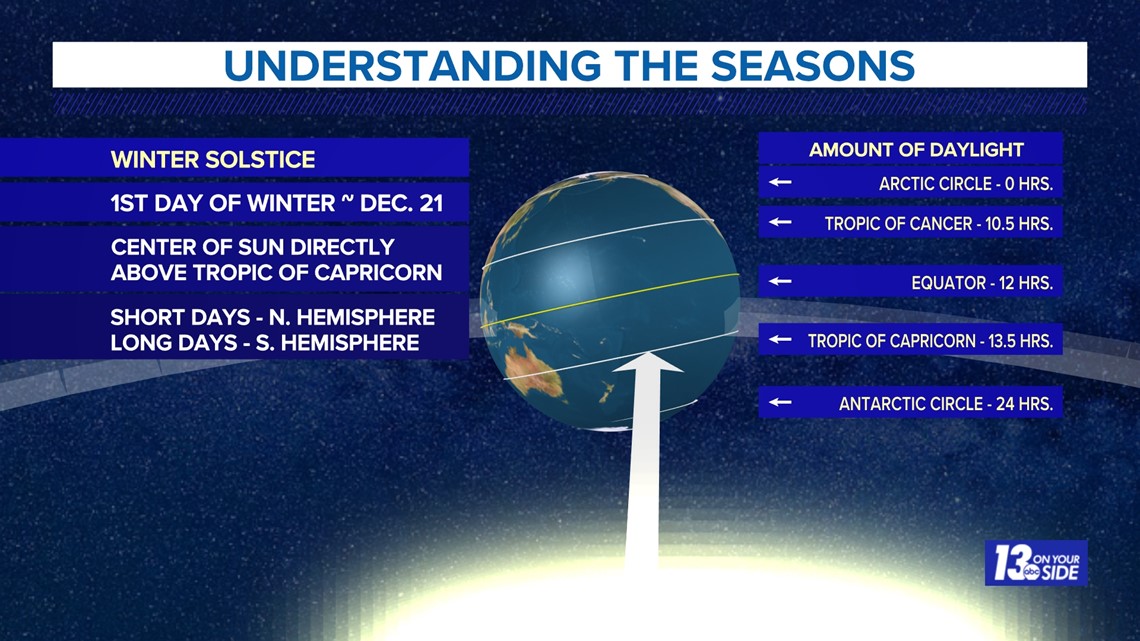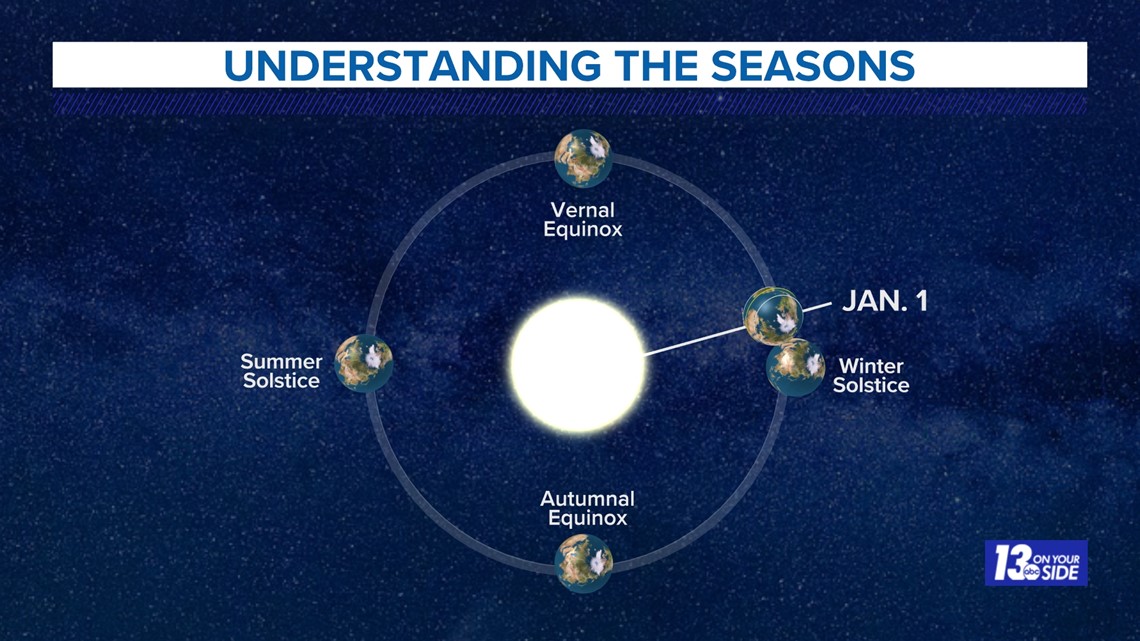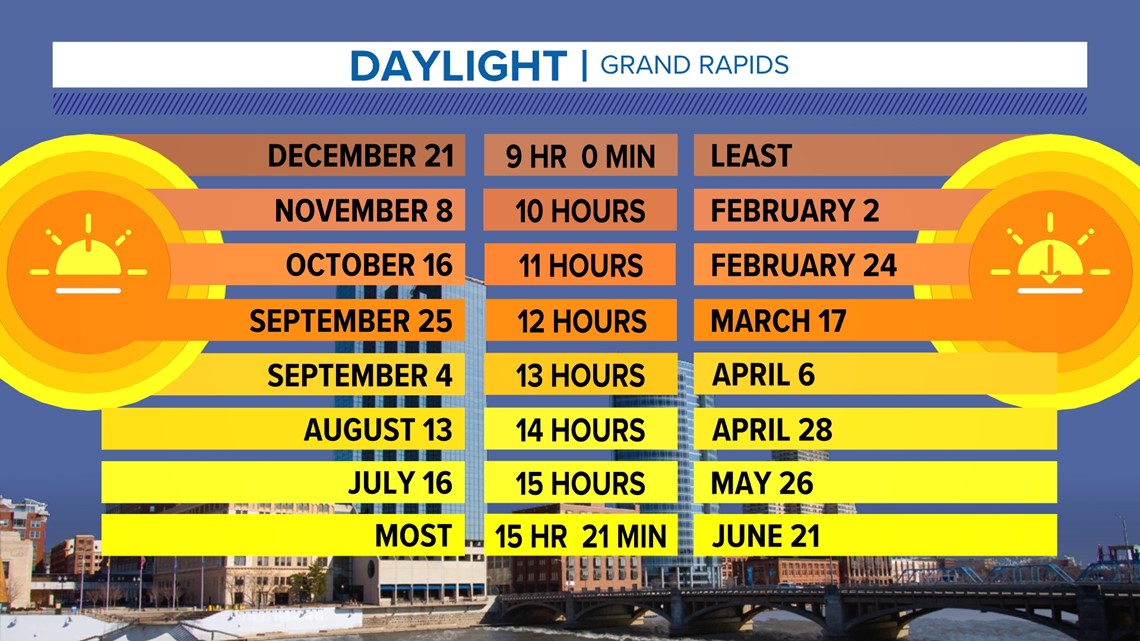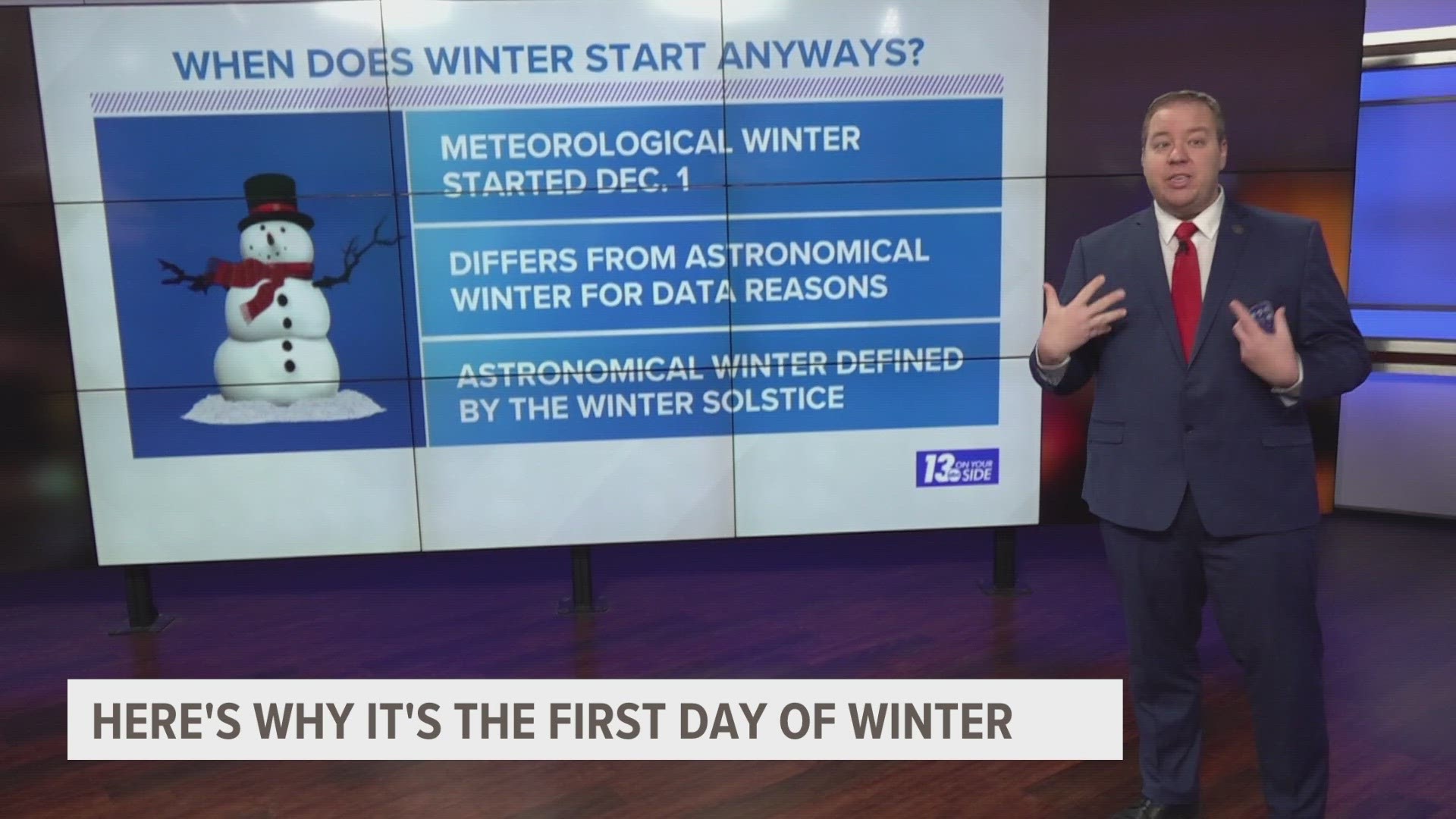GRAND RAPIDS, Mich. — It's almost Christmas, and we've seen a few rounds of snow over West Michigan, but winter doesn't start officially until 10:27 pm on December 21st!
So what gives?
Well, there are actually two different periods we can define as winter. There is meteorological winter, which basically only meteorologists use, and there is astronomical winter, which is what you are likely to see on your calendars. That second one is centered around the movement of earth and the Winter Solstice and we're going to explain why that is!
The Question:
Why does winter start near the end of December?
The Why:
To start out let's explain meteorological winter.
Meteorological seasons divide the year up into groups of 3 months that run from the 1st of one month to the end of another. For winter that is December 1st through the end of February. This is a relatively modern creation and was done to make the process of data collection and comparison more meaningful.
The reason that meteorological seasons were needed is because the astronomical seasons fluctuate in time and date over a small period each year. For instance the start of winter, which can happen on December 21st or December 22nd, in 2023 starts at precisely 10:27 EST in the evening.
So why this hard start time? It's because astronomical winter begins with the winter solstice, which is also the shortest day of the year!
The winter solstice is defined as when the sun is directly over the Tropic of Capricorn. This also means the North Pole will see zero hours of sunlight, while the South Pole sees 24 hours of sunlight.


The other seasons are similarly defined by the position of the sun over the equator and the tropics. Spring comes during the vernal equinox, when the sun is over the equator. Summer during the summer solstice, when the sun is over the Tropic of Cancer. Then fall comes during the autumnal equinox, with the sun is again over the equator.


While it's somewhat depressing that this is the shortest day of the year, and thus has the most darkness, you should know that it is now all up hill from here. In the months ahead we will go from just 9 hours of sunlight on December 21st, all the way to almost 15 and a half hours by June 21st.


So try to look on the bright side!
-- Meteorologist Michael Behrens
Follow me on social media! Facebook Meteorologist Michael Behrens, X/Twitter @MikeBehrensWX, and Instagram/Threads @MikeBehrensWX.
Email me at: MBehrens@13OnYourSide.com
Have a 30-second video or still photo to share? We'd love to share it with everyone! Email your image to Weather@13OnYourSide.com or post it to our 13OnYourSide Facebook Page.
►Make it easy to keep up to date with more stories like this. Download the 13 ON YOUR SIDE app now.
Have a news tip? Email news@13onyourside.com, visit our Facebook page or X/Twitter. Subscribe to our YouTube channel.

